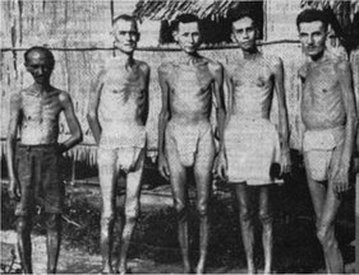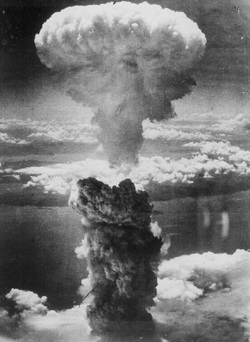World War II
The story of Iowa and Yamanashi begins in conflict. From 1941 to 1945, Japan and the U.S. were bitter enemies.
"During the war, each side demonized the other. The United States portrayed the conflict as a battle for the preservation of Anglo-Saxon civilization...Japan claimed to be the sole champion of Civilization in Asia and rallied against white supremacy."
~Yukiko Koshiro, Trans-Pacific Racisms and the U.S. Occupation of Japan
(New York: Columbia University Press, 1999), 1
"During the war, each side demonized the other. The United States portrayed the conflict as a battle for the preservation of Anglo-Saxon civilization...Japan claimed to be the sole champion of Civilization in Asia and rallied against white supremacy."
~Yukiko Koshiro, Trans-Pacific Racisms and the U.S. Occupation of Japan
(New York: Columbia University Press, 1999), 1
Pearl Harbor |
The U.S. entered WWII when Japan attacked Pearl Harbor on December 7, 1941. The Pacific war claimed the lives of more than 100,000 U.S. military personnel. "Japan's empire stretched deep into the interior of China, and the attack on Pearl Harbor was part of a strategy to seize control of the southern reaches of Asia and the Pacific." ~John W. Dower, Embracing Defeat: Japan in the Wake of World War II (New York: W.W. Norton & Co., 1999), 1. |
Allied Prisoners

Photo: University of Houston Special Collections.
Allied POWs suffered in Japanese captivity. One in three died from starvation, forced labor, punishments, or disease.
Japan Surrenders

Photo: National Archives and Records Administration.
Japan surrendered on August 15, 1945, after the atomic bombing of Hiroshima and Nagasaki.
"Close to 3 million Japanese were dead, many more wounded or seriously ill, and the country in ruins as a consequence of the war.... Sixty-six major cities had been heavily bombed, destroying 40 percent of these urban areas overall and rendering around 30 percent of their populations homeless."
~Dower, Embracing Defeat, 37, 45
"Close to 3 million Japanese were dead, many more wounded or seriously ill, and the country in ruins as a consequence of the war.... Sixty-six major cities had been heavily bombed, destroying 40 percent of these urban areas overall and rendering around 30 percent of their populations homeless."
~Dower, Embracing Defeat, 37, 45

